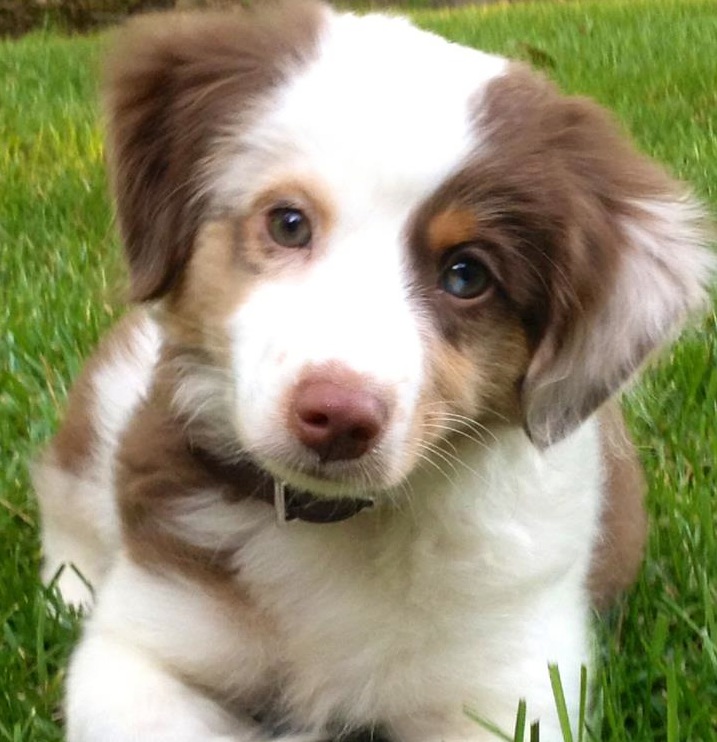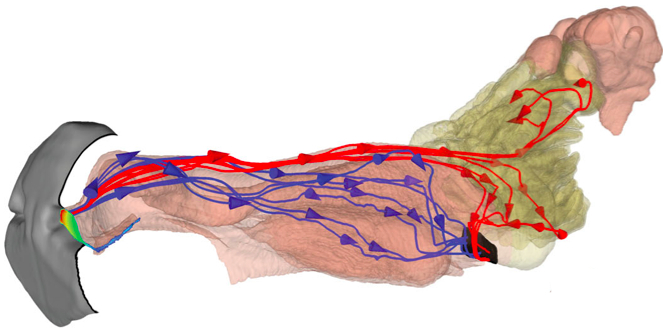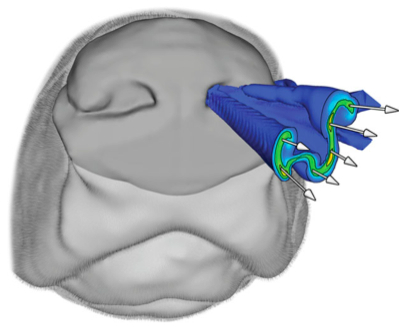
This is my puppy, Conan, and the reason I’ve been buying a lot of dog books. For those of you who’ve never had the pleasure, dog books are for skimming, not reading. They’re hokey, repetitive, poorly written and peppered with pseudoscience. But Friday I found an exception: Inside of a Dog, a fascinating, science-rich story of how dogs think and perceive the world.
Maybe I shouldn’t have been surprised. The author, Alexandra Horowitz, worked for the New Yorker before becoming a scientist specializing in canine cognition. Unlike the other books, which focus on how to make a dog do what you want, this one asks, what does a dog want to do, and why?
Early on, Horowitz introduces German biologist Jakob von Uexküll and his concept of umwelt. The word translates to ‘environment’ or ‘surroundings’. The concept is that two animals can share the same environment but experience it quite differently.
Take, for example, my mid-morning walks with Conan around our bustling Brooklyn neighborhood. Things I notice: other people’s faces and conversations, signs on shop windows, oncoming cars, traffic lights, litter. Things Conan notices: The smell of that tree trunk, and each and every leaf in the pile next to it, and the pebbles under the leaves, and the dirt, oh, the dirt!
Everybody knows that dogs have an excellent sense of smell, thousands of times more sensitive than our own. What I didn’t fully appreciate before this book is that my dog’s nose pretty much dictates his experience of the world — just as my eyes dictate mine. “As we see the world, the dog smells it,” Horowitz writes. “The world of scents is at least as rich as the world of sight.”
Human noses aren’t built to take in much from that pungent world. When we’re trying our damnedest to smell something, we inhale deeply. But as soon as we exhale, we lose the scent. The airflow patterns of the dog nose are strikingly different: They have one air passage for breathing and another for smelling. Scientists figured this out recently, Horowitz mentioned, using a “specialized photographic method.”
I looked up the method, and it’s about as charming as engineering research can be*. It comes from the lab of Gary Settles, a mechanical engineer at Penn State. Before Settles got into this work about a decade ago, most all of the studies about dog smell were concerned with the tissue deep inside the nose that detects odor molecules: how many receptors, how many types of receptors, how dense are the receptors. Nobody had done sophisticated physical analyses of the nasal cavity.
Here’s how Settles’s team did it in one study, published in 2010. The researchers dressed seven dogs in a specialized muzzle that can precisely measure how air comes in and out of the nostrils. Then they presented the dogs with never-before-smelled odors, triggering focused bouts of sniffing. Then computer models merged that airflow data with high-resolution MRI scans of a canine cadaver, creating three-dimensional models of sniffing and breathing paths inside the nose. Here’s what one looks like:

The dog’s nostrils are in gray on the left; the rest shows the inside of the nose. The brownish area on the right is where all of the smelling, or olfaction, happens — all those receptors sensing different types of odor molecules. The red lines represent the airflow paths when the dog is smelling, whereas the blue lines show the paths during breathing.
You can see that because of the nose anatomy, a dog can quickly move odor molecules to the back, letting them linger atop olfactory receptors. The front area, meanwhile, stays clear for continued breathing. Our olfactory receptors, in contrast, sit at the top of our nasal cavity, easily perturbed as we breathe out.
 If you’ve ever watched (or felt) a dog sniff, you probably noticed that they do a lot of snorting — expelling puffs of air that seem to be distinct from typical respiration. Settles’s study explains that, too. It turns out that these puffs create a powerful air current (with “two large, co-rotating vortices,” pictured left) that actually helps capture new scents below it and pushes them backwards into the nostril.
If you’ve ever watched (or felt) a dog sniff, you probably noticed that they do a lot of snorting — expelling puffs of air that seem to be distinct from typical respiration. Settles’s study explains that, too. It turns out that these puffs create a powerful air current (with “two large, co-rotating vortices,” pictured left) that actually helps capture new scents below it and pushes them backwards into the nostril.
So yes, dogs can smell well.
Yesterday, when Conan was taking me for a long walk and I was scrutinizing his sniffing, I started wondering why his nose fascinates me so. I think it’s because so much of puppy-raising is about shaping a dog to fit into our human world. No-no, Conan, no jumping on the table (nevermind that dogs evolved to snatch up human food scraps). Drop that shoe, Conan! (nevermind that he’s teething). Eww, Conan, don’t lick Eran’s face (nevermind that it’s covered in delicious smells). Now I can begin to appreciate why he behaves the way he does.
And it’s humbling to think of how much of this big wide world my microsmatic self will never get to experience. The only whiff I get comes from watching my dog’s delight.
—
*Not that I would know, as I never read engineering papers.
Have you tried The Other End of the Leash by Patricia McConnell? I have no idea whether it’s pseudoscience, but it was both an entertaining read and extremely good advice. I have a nine-year old Jack Russell terrier, my first dog and the only dog I have ever trained, and she is by far the best-behaved dog anyone in my family has ever owned. (Out of a dozen or so, owned by my siblings and parents over the years, most of which were supposedly easier breeds than JRTs.) I credit that book, mostly.
I loved “inside of a Dog,” too, and Ms Horowitz even engaged in an email exchange (helped, no doubt, by the incredibly charming photo I sent her of our 3 dogs).
But for a more philosophical exploration, you might try “The Philosopher and the Wolf,” a book I adored, while not exactly liking the author.
http://www.amazon.com/Philosopher-Wolf-Lessons-Death-Happiness/dp/B006CDFBB2/ref=sr_1_1?s=books&ie=UTF8&qid=1352821026&sr=1-1&keywords=the+philosopher+and+the+wolf
Thanks, both, for these recommendations! I’m not sure how many more dog books I can handle at the moment, but I’m sure in a few months I’ll be hungry for more…
Dogs are the perfect sensory compliment to humans. They hear much better and smell much, much better than we do. We see better and in more detail, more color. We have language; they are better observers of body language and movement.
When early man was sitting around the fire and wild dogs wandered in for food scraps, the humans saw the dogs could sense trouble long hefore they did. Dogs became invaluable companions.
They still are.
Thanks for this article, Virginia, and introduction to umwelt. I’d read on Horowitz’s book in New Scientist, in preparation for a sequence in my dissertation (in comics form) devoted to how my dog experienced the world (http://spinweaveandcut.blogspot.com/2012/11/a-dogs-view.html) I came across your article in doing further looking to touch upon that idea later in the work. This is a big help – thanks, Nick